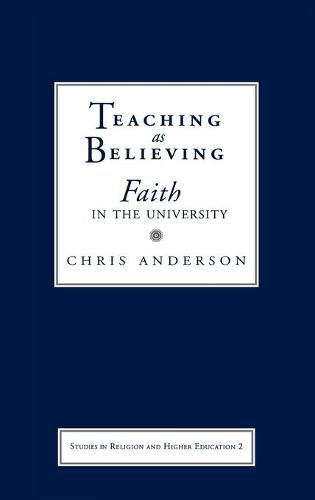Readings Newsletter
Become a Readings Member to make your shopping experience even easier.
Sign in or sign up for free!
You’re not far away from qualifying for FREE standard shipping within Australia
You’ve qualified for FREE standard shipping within Australia
The cart is loading…






The public university classroom is a place where socialization still occurs: it’s where students learn to be citizens of the world. Having attended to political correctness and multi-culturalism, universities are now facing the issue of spirituality in their quest to educate the whole person. In this book, Chris Anderson takes up this task by carefully exploring how a professor of faith can help a public university accomplish its pluralistic mission. Anderson illustrates how the study of secular literature throws fresh light on the ways in which the Bible can be read. He also deftly shows how a sympathetic study of the Bible trains secular readers for understanding the abiding significance of the Western literary canon as a kind of scripture. Anderson thus gives readers a book that is as much about the experience of a faithful teacher and the proper ends of education as it is about discovering the right ways to read texts-be they sacred or secular.
$9.00 standard shipping within Australia
FREE standard shipping within Australia for orders over $100.00
Express & International shipping calculated at checkout
The public university classroom is a place where socialization still occurs: it’s where students learn to be citizens of the world. Having attended to political correctness and multi-culturalism, universities are now facing the issue of spirituality in their quest to educate the whole person. In this book, Chris Anderson takes up this task by carefully exploring how a professor of faith can help a public university accomplish its pluralistic mission. Anderson illustrates how the study of secular literature throws fresh light on the ways in which the Bible can be read. He also deftly shows how a sympathetic study of the Bible trains secular readers for understanding the abiding significance of the Western literary canon as a kind of scripture. Anderson thus gives readers a book that is as much about the experience of a faithful teacher and the proper ends of education as it is about discovering the right ways to read texts-be they sacred or secular.